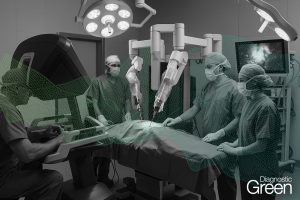Objective: The present research aimed to analyze the application of indocyanine green (ICG) fluorescence contrast technique in the resection of hepatoblastoma (HB) in children, and to discuss the use of ICG in the surgery of HB and the value of guidance. We retrospectively analyzed the data of 23 children with HB resected using ICG fluorescence contrast technique.
Results: All primary lesions showed bright fluorescence in 23 HB cases. 22 had clear borders with normal liver tissue, while one neonatal case showed no difference between tumor and background. 13 anatomic resection and 10 non-anatomic resection were performed with ICG fluorescence navigation. The surface of the residual liver was scattered with multiple tumor fluorescence, which was then locally enucleated according to the fluorescence. 22 isolated specimens were dissected and fluorescently visualized. Pathology identified deformed, vacuolated and densely arranged hepatocytes resembling pseudo-envelope changes without tumor residual, due to the compression of the tissue at the site of circumferential imaging.
Conclusion: The ring ICG fluorescence imaging of HB indicates the tumor resection boundary effectively, especially in multiple lesions cases




